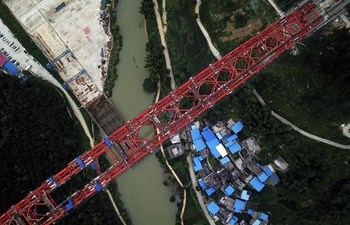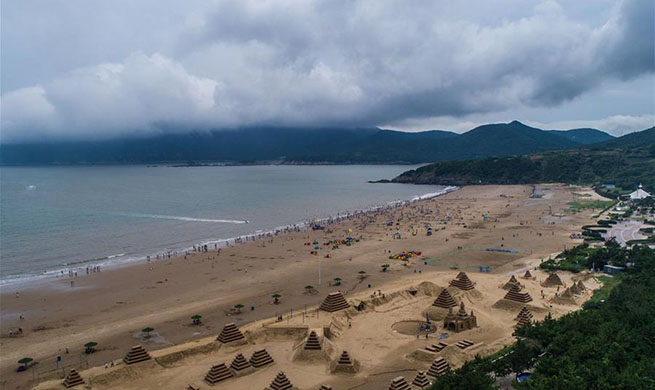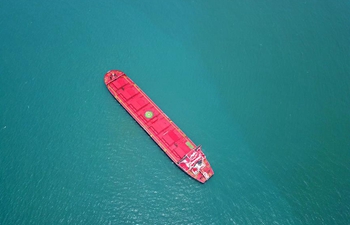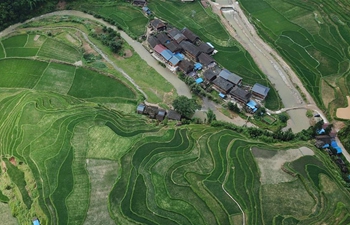ATHENS, July 1 (Xinhua) -- A group of Greek scientists including engineer Alexandros Oikonomidis made a successful test this weekend, firing a replica model of the ancient steam cannon designed by Archimedes of Syracuse (287-212 BC), the ancient Greek mathematician, physicist, engineer and inventor.
The test was carried out in a field at Koropi, a suburb of Athens. Original cannon had been used to defend the city from invading Romans (213-211 BC). The replica model was constructed four decades ago by Oikonomidis' late colleague Yannis Sakkas.
Centuries before him, Leonardo da Vinci had also reconstructed Archimedes' war device, according to scholars.
The steam cannon basically consists of a metal tube. One end of the tube is capped while the other is loaded with the projectile. Once the tube is heated and reaches high enough temperature, a small amount of water is injected in behind the projectile. It rapidly turns into high-pressure steam, blasting the projectile out of the barrel.
A projectile of about 6 cm diameter reached some 30 meters on Saturday, far less than the over 1,000 meters the ancient steam cannon larger in size could reach. Still the mission was accomplished.
Oikonomidis, assisted by Yorgos Sakkas, the son of the late engineer, and other Greek experts, proved once again that the design of the machine is working and simple ideas can make great difference.
"This is a replay of an experiment made by my colleague and friend Yannis Sakkas 37 years ago. He worked based on a manuscript discovered in the archives of the great inventor, engineer, mechanic, architect and artist Leonardo da Vinci," Oikonomidis told Xinhua before the test.
"Among these archives there were three sketches depicting da Vinci's version of the steam cannon Archimedes had invented to target the Roman ships which had gathered around Syracuse," he said.
"He (Sakkas) wanted to prove that Archimedes' achievements, as narrated, were not legends but the crystal clear reality," Oikonomidis added.
Oikonomidis undertook the task of tearing apart, repairing and putting together again the 1.2 meter-long device which had been left aside in a warehouse for years.
Saturday's experiment was carried out ahead of an exhibition on Ancient Greek warfare technology which will be hosted at the Herakleidon museum opposite the Acropolis hill from August 22, Pantelis Mitsiou, head of the museum's marketing and communication department, told Xinhua.
"Basically we wanted to have a firing shot for educational purposes, to see how this device functioned in antiquity," Mitsiou said.
"The idea is very simple. The aim is to create enough pressure inside the chamber so that it will blast the projectile to a distance," he explained.
The experiment was recorded in slow motion on video.
"This (video) will be part of the exhibition and the educational program. Based on this video and today's results, there will be classes in schools," Mitsiou added.

















